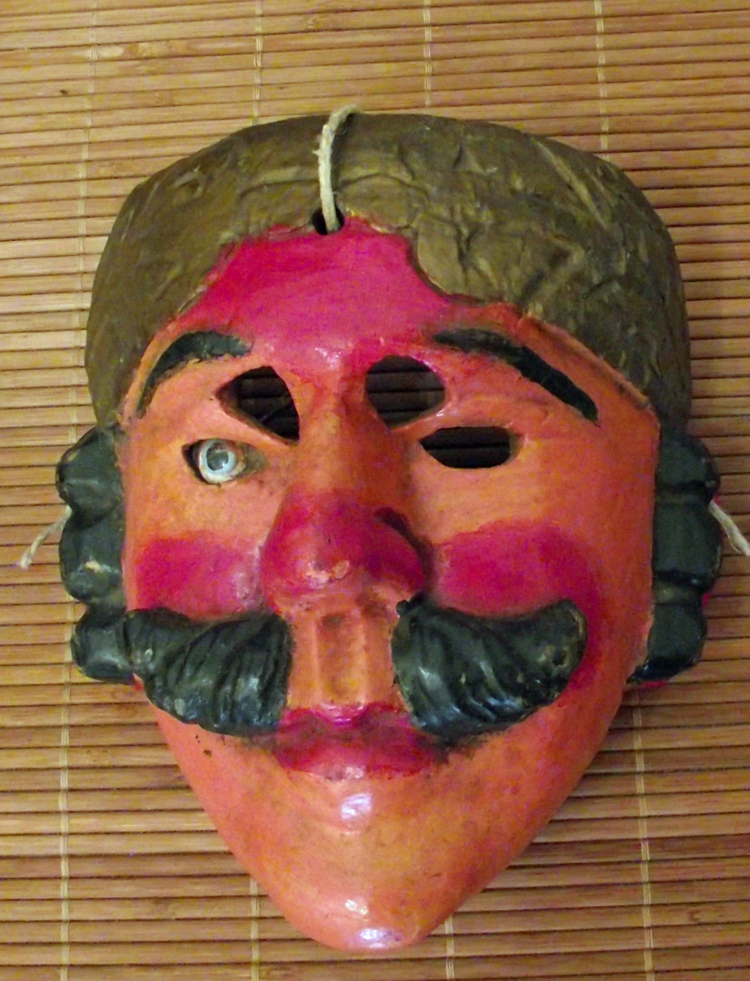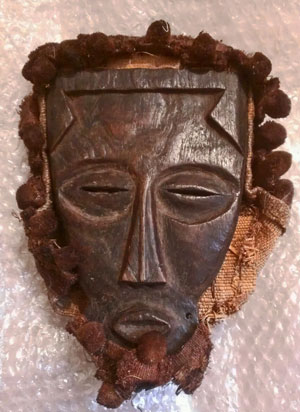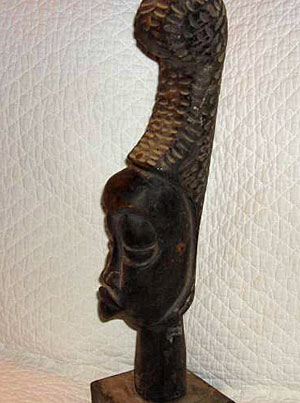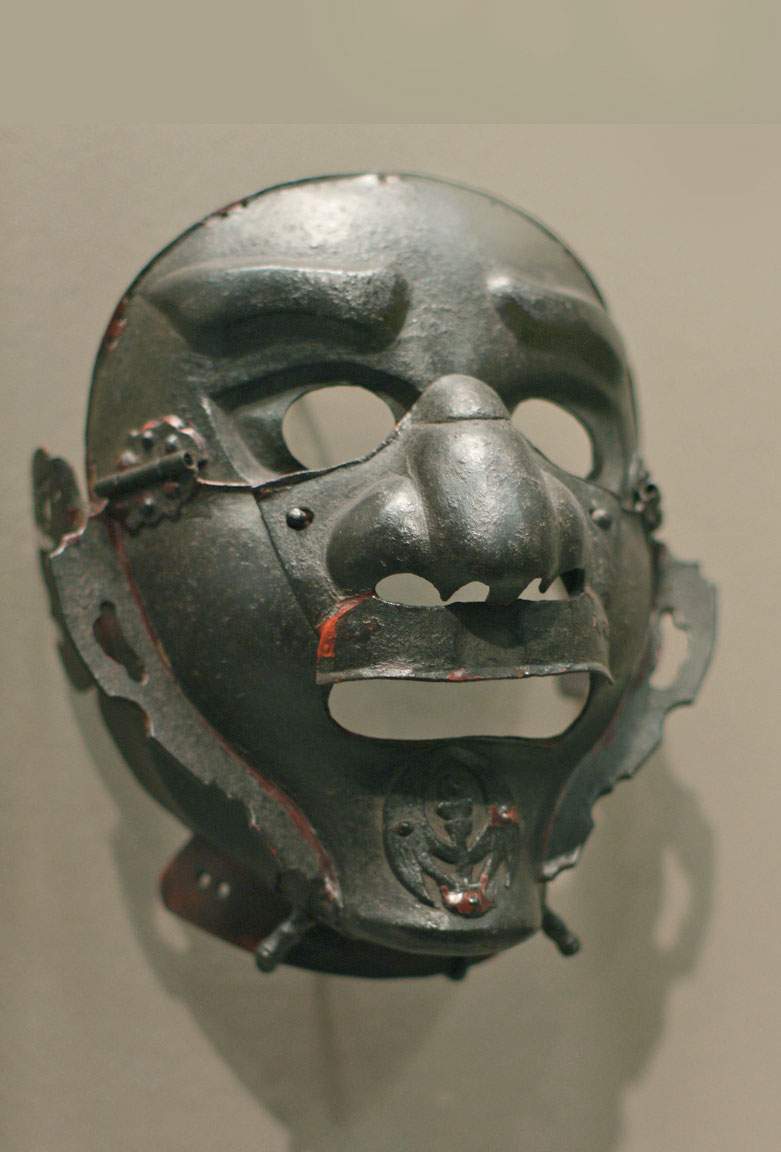 Q: Good morning Bob! In your opinion, is it a Guatemalan mask? Is it old? Is it repainted as it seems? Could you tell me something about this mask? The only things I know are those read on your site.
Q: Good morning Bob! In your opinion, is it a Guatemalan mask? Is it old? Is it repainted as it seems? Could you tell me something about this mask? The only things I know are those read on your site.
Thank you, Monica, 1637
A: Thanks for sharing another interesting mask with us. It was probably meant to be a vaquero (cowboy) when it was originally made in the late 20th century. Then, in the early 21st, the mustache, sideburns and eyebrows changed to black. The morerias (Guatemalan costume and mask rental shops) will often clean, repair and repaint masks when they need improvement. They may also change one or more colors to make them represent a different character. So this mask should be considered authentic, but with a few problems. The older carving and the more recent painting are inferior, one glass eye is missing, and the golden hair on top was not repainted in black.
Additional info: All over Guatemala masks are worn in spectacular masquerades performed by communities throughout the country during indigenous festivals, Catholic feast days and secular events. Frequently sponsored by religious organizations known as cofradías, many of these dance-dramas (bailes or danzas) date back to at least the colonial era (1523–1821). Elaborately costumed and often highly scripted, the performances bring to life sacred narratives and popular histories, and serve as public expressions of devotion and communal identity.
These masks draw their powers from the interplay of disparate cultural forces and their
collective influence. The eyes of masqueraders become those of sacred deer and jaguars, saints and serpents, Spanish conquistadors and Maya warriors, cowboys and bulls, and countless mischievous monkeys—all of whom viewers are given the opportunity to meet face to face.
“For more than 50 years, Jim and Jeanne Pieper have traveled to Guatemala, attending
festivities across the country, and meeting with carvers, masqueraders and Maya priests to
assemble a collection of masks that retain their energy from years of use,” said Marla C. Berns, Director of the Fowler Museum at UCLA. “Their documentation adds immeasurably to the value of this collection, and its potential for future study and teaching.” A-







2 Comments
Jean
I agree with you, Bob, it is most probably an original vaquero mask. There is some patina on the back, particularly on the edges. But the repaints are very strange: usually when a vaquero mask is transformed in an “moro” mask, all the hair are repainted in black, not just the moustache, the eyebrows and the sideburns ! And the red dots on the cheeks, nose and front usually mimick the sunburns of white skin conquistadores.
I have never seen such a mixture of colors. Difficult to know what character it could have represented, and where, or in what dance, it could have been used…Perhaps it could have been partially repainted for the sale market, with bright colours to appeal the tourist ?
Quite appealing, indeed!
Cheers.
Jean
monica
thanks Jean! I believe it was originally a conquistador, with all its features, which was later modified as “vaquero” only in sideburns and mustaches. The seller had another blonde mask !!